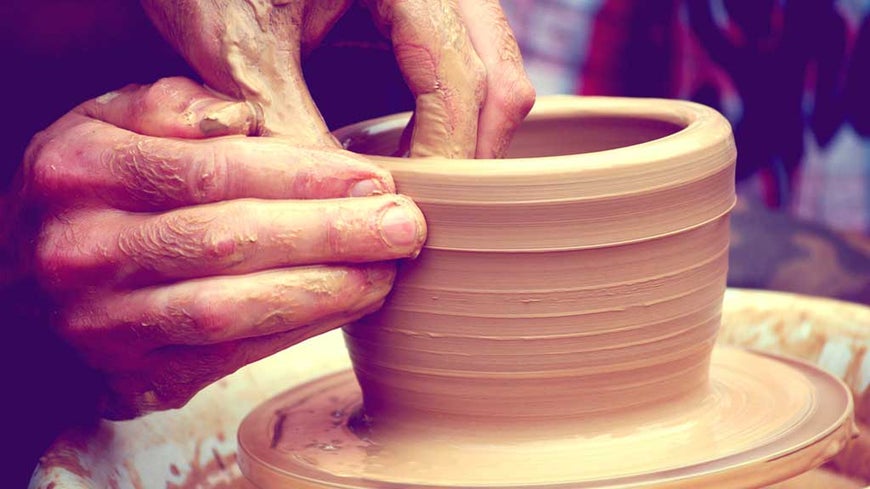12 simple finger dexterity exercises for seniors

Maintaining hand dexterity for as long as possible enables independence and the easy management of daily tasks in senior years. While it can be harder to maintain manual dexterity and fine motor skills as we age, there are easy daily exercises and activities that can keep your fingers flexible and effective. These are some exercises and activities you could try. If you do have any health issues, check with your doctor to make sure these activities are suitable for you.
Play string games

String games like Cat’s Cradle keep your hands and fingers strong and flexible1. All you will need is a length of string of about 90 to 180 centimetres in length2. Buy a book or look online for the different string games you can practice with – there are many out there that not only work your fingers and hands, but also your brain. Best of all, string games are a simple yet engaging game you can play by yourself or with others, anywhere, at any time.
Use a locks and latches board

Set up a locks and latches board or a nuts and bolts board and enjoy practising with it a few times a day. The locking/unlocking and latching/unlatching motions will keep your brain engaged while working your fingers and hands.
Enjoy origami

Origami is a fun and rewarding craft activity anyone can take up. All you need is some colourful origami folding paper and origami designs to get started. You can buy a book or look online for the numerous ways you can turn paper into origami masterpieces3. When it comes to designs, there are animals, flowers, everyday items, and figurines, as well as boxes that serve a utilitarian purpose.
Learn a musical instrument

Your retirement years could be the perfect time to master a new musical instrument. Playing an instrument like the piano, flute, clarinet or violin gives you the chance to flex your fingers and work your hand muscles, plus mastering an instrument will give you a sense of accomplishment. Practising even just ten minutes a day could keep your hands strong and more flexible.
Play with clay or putty

Playing with clay or putty is a wonderful activity for improving and maintaining hand dexterity4. As you work the clay into a desired shape the resistance of the clay strengthens your fingers and hands. Start with a basic challenge, such as balls or sticks, and then gradually venture into more complex shapes. Check online for ideas for clay and putty shapes. There are therapeutic putties you can buy, and these are designed especially for improving manual dexterity.
Take up sewing and knitting

Sewing and knitting can become rewarding hobbies for those looking to improve their manual dexterity. The precise movements required for both encourages you to practise and work different hand muscles. You can start by hand sewing simple things like buttons or knitting a basic design before moving on to more complex items, such as patchworks and jumpers or cardigans.
Practise handwriting

Handwriting is another way to get your hands and fingers moving. Seniors who are seeking to improve the flexibility of their fingers can start by picking up a pen or pencil and writing without using their thumb. Move on to writing with your non-dominant hand to keep it working as hard as your dominant hand.
Hand exercises

Hand exercises are one of the best ways to keep your fingers and hands working and flexible. These exercises work different areas of your hand.
Make a fist

The fist exercise is a great way to improve strength and dexterity of the finger joints5,and it’s very simple to do. Start by making a fist and then squeezing inward on the fist as hard as you can manage. Hold for three to five seconds, and release slowly. Do the same with the other hand, and repeat five times for each.
O exercise

The O exercise is also simple to do. Start by making an O figure with your thumb and index finger, and make sure your other fingers are kept straight as you do so. Hold for a few seconds and bring your index finger back up. Make another O with your middle finger and thumb, all the while keeping the other fingers straight. Repeat for the remaining two fingers. Vary the exercise by doing it as fast as you can, but still hold the O for a few seconds each time.
Thumb flexes

Our thumbs are core to manual dexterity because they allow us to grip things securely. Practising thumb flexes every day enables you to keep your thumbs strong and flexible. To do a thumb flex, start by holding a hand in front of you with your fingers grouped together and your thumb separated. Bend your thumb across your palm until it touches your pinkie. Hold for several seconds and return to the original position. Repeat ten times.
Do finger lifts

Finger lifts can be challenging for those with stiff hands and fingers, but they can greatly help with improving dexterity. To do a finger lift, start by laying your palm flat on a table or some other stable surface. Lift one finger off the table without moving the other fingers. Repeat five times for each finger before moving onto the next, and do more repetitions as you gain more flexibility in each finger.
1 Dec 2016